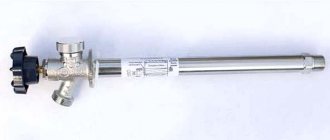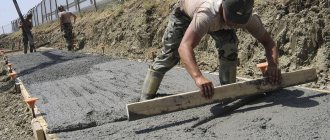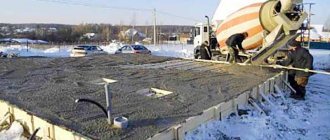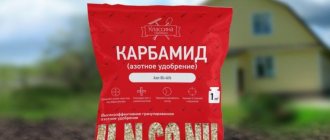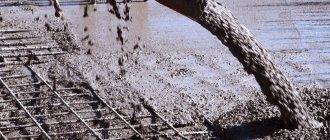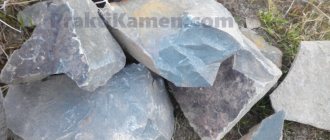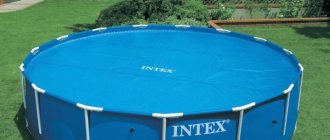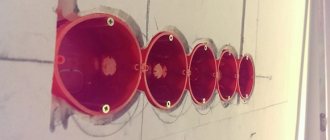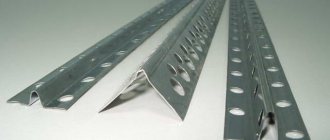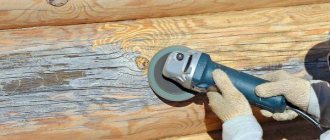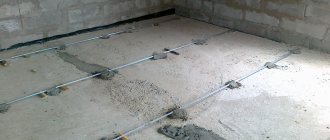Traditionally, “wet” processes include all activities related to the construction of buildings and structures that are associated with concreting, masonry work, plastering, etc. One of the main components necessary for preparing concrete mixtures and solutions directly on the construction site is water, which freezes at subzero temperatures.
In this part of the training course, we will talk about what nuances need to be taken into account when carrying out “wet” work in winter and how to properly use antifreeze additives.
Are there any advantages to winter concrete work?
In general, working with concrete in harsh conditions of low temperatures entails additional difficulties, but it is impossible to stop construction for six months every time autumn comes, and besides, winter work also has significant advantages:
- Winter discounts on building materials and the decline in demand for labor make it possible to save money.
- In winter, foundations can be concreted on weak or brittle soil.
- Frozen access roads make it possible to easily deliver heavy equipment and materials to a construction site.
The nuances of using antifreeze additives
It was already mentioned above that SP 70.13330 regulates the use of antifreeze additives. The fact is that antifreezes contain salts, and some additives, due to the presence of chlorides, can cause serious corrosion of steel reinforcement.
Each manufacturer has its own selection of additive components, but the main thing that a developer should remember when purchasing antifreeze additives is that he must choose a quality product from a well-established manufacturer. It should be written on the product packaging that the use of anti-frost additives in reinforced concrete structures is allowed.
Kirill Lebedev
If anti-frost additives are not used correctly in masonry mortars, in the spring, white stains (efflorescence) may appear on the facing brickwork. Therefore, you should strictly adhere to the manufacturer’s recommendations and use the dosage of antifreeze in strict accordance with the instructions.
Conclusions: The use of anti-frost additives ensures the continuity of the construction process at any external temperature and guarantees the quality and long service life of a country house. Although negative temperatures lead to increased costs associated with shorter working hours, additional costs for lighting, the need to heat workers and structures, etc., in winter prices for building materials, construction services, and equipment rentals decrease slightly. The cost of additives in the overall estimate for building a house is small. Therefore, with a competent approach, it is possible to bring the price of construction in winter and the price of construction in summer to a common denominator.
Features of winter concreting
In winter, the main enemy of high-quality concreting is low temperatures, which have a negative impact on the processes occurring both during concreting and during concrete hardening.
The formation of a solid substance - concrete - occurs as a result of the hydration reaction of the minerals that make up Portland cement. For this reaction to take place, a temperature above 0°C is necessary, since at negative temperatures water freezes and the hydration reaction stops.
Already at temperatures below 5°C, the reaction rate sharply slows down, and the strength gain of concrete slows down.
Low temperatures cause the following problems:
- cessation of the hydration reaction;
- increase in internal pressure due to freezing and associated expansion of the material;
- the formation of ice crystals around the reinforcement, which leads to poor adhesion to concrete;
- obtaining low-strength concrete.
The main task in winter is to ensure that the concrete reaches critical strength (30–50% of the design strength), after which negative temperatures no longer have a negative impact on concrete. Typically, under optimal conditions, critical strength is achieved 4–6 days after installation.
Therefore, in winter, temperature becomes of primary importance.
The temperature of the concrete mixture is measured before, during and after placement.
Important!
For winter concreting, it is recommended to use Portland cements and high-quality quick-hardening cements.
Dosage and consumption
The amount of antifreeze additive required depends on the following factors:
- strength of the cement used;
- ambient temperature indicator;
- chemical composition of the protective mixture.
How much additive is required to obtain a certain strength of concrete mortar is presented in the table:
| Average air temperature | Amount of additive,% of total mass | Expected strength of the solution, % of the grade when hardening in the cold, day | |
| 7 | 28 | ||
| 0 to -5 | 2 | 25 | 60 |
| -6 to -10 | 3 | 15 | 45 |
| -11 to -15 | 4 | 5 | 35 |
Concreting technology in winter conditions
As part of the work project, activities are developed that ensure:
- Preventing concrete mortar from freezing during transportation, laying and compaction.
- Prevention of freezing of freshly laid concrete until critical strength is achieved.
- Favorable heat and humidity conditions for strengthening of hardening concrete.
Preparation of concrete in winter. Measures to prevent freezing of ready-mixed concrete during transportation, placement and compaction
The finished concrete mixture supplied to the construction site must have a temperature of at least 5°C. To do this, mixing is carried out in warm (up to 70°C) water, and the filling materials are heated.
Important!
The cement is not heated to avoid welding. The transportation time of the finished concrete solution should not exceed 4 hours.
Surfaces for concreting and reinforcement must be heated close to the temperature of the concrete solution, for which warm or hot air is used, but not steam or water.
When transporting the finished concrete mixture for a long time and it is impossible to use heating, antifreeze additives are used.
Measures to prevent freezing of concrete before reaching critical strength
There are two main methods of winter concreting:
- warm concrete;
- cold concrete.
Cold concrete is concrete that will harden without heating. To ensure its hardening, special antifreeze additives are designed to reduce the freezing point of water and at the same time accelerate hydration reactions so that the amount of unbound water in the solution decreases as quickly as possible.
Widespread antifreeze additives are electrolytes, Na and K salts, but their use has some limitations:
- sodium salts are not used in reinforced concrete, as they lead to corrosion of the reinforcement;
- some types of Portland cement (for example, highly alkaline or made from clinker with a high content of aluminosilicates) are not used in conjunction with electrolytes;
- sodium and potassium salts are not used in mixtures with potentially reactive rock filler;
- electrolyte salts should be tested experimentally for the formation of efflorescence.
Modern complex antifreeze additives do not have the disadvantages of electrolyte salts, provide the ability to carry out concrete work at low temperatures and have a complex effect (not only antifreeze, but also plasticizing and others).
Warm concrete is concrete that, after laying, is subjected to various heating and heating procedures.
Methods for heating concrete
After the concrete is laid and compacted, it is necessary to maintain an optimal temperature until critical strength is achieved, for which three types of measures are used:
- thermos method;
- construction of greenhouses;
- heating the concrete.
These measures are used both independently and in combination with antifreeze additives.
The choice of method depends on many factors:
- type of construction;
- composition of the concrete mixture;
- presence and type of fittings;
- presence or absence of appropriate equipment;
- economic expediency.
Heat conservation or "thermos method"
The thermos method is used in massive structures alone or in combination with accelerator additives. Accelerators contribute to faster hardening of concrete, which means that critical strength will be gained faster.
The hydration reaction is exothermic, that is, it occurs with the release of heat.
In massive structures, enough heat is released for heating, therefore, if you pour concrete into insulated formwork, and after pouring, cover it with PVC film and heat-insulating materials (mats, rolled materials, boards, foam), the concrete will maintain a temperature suitable for hardening up to a critical temperature strength.
Advantages of the method:
- energy saving;
- using concrete's own heat;
- relative simplicity.
Disadvantages of the thermos method:
- use only in massive structures;
- ineffectiveness at particularly low temperatures (solved by adding antifreeze additives);
- not suitable for designs with a large cooling surface area.
Hot dry thermos method
In this case, it is possible to lay concrete on a frozen base without heating. A layer of expanded clay heated to a temperature of 200–300°C is poured into the insulated formwork, and after it cools to 100°C, concrete mixed with warm water is laid. As a result, the heat from the cooling expanded clay is used to heat the concrete.
Construction of greenhouses
Teplyaks are a kind of tents that are installed above monolithic structures. Heat guns are installed inside the greenhouses in such a quantity as to ensure the required hardening temperature (above 5°C). The tightness of the shelter is of particular importance.
Methods for artificial heating of concrete
The highest rate of concrete hardening is at a temperature of 50°C.
It is possible to ensure the design temperature of concrete hardening until critical strength is achieved by using artificial heating of concrete using various methods:
- Electrode. Electrodes are fixed inside the formwork, which can be plate, strip, rod, or string. Heat is generated when current is passed through the concrete mixture.
- Conductive (contact). Heat is generated in the conductor when current passes through it and is transferred to the concrete mixture.
- Infrared. IR radiation is used to warm up the base, reinforcement and heat concrete without a heat carrier.
- Induction. Heat is generated by the fittings located in the electromagnetic field of the inductor.
The disadvantage of the methods is the need to use expensive equipment and electricity.
The use of anti-frost and accelerating additives allows concrete to quickly gain critical strength and thus save energy and increase equipment turnover.
How to care for concrete after pouring
In concrete with a low water-cement ratio, it is necessary to retain water, which is needed for the hydration process. If this is neglected, the quality of the final product will noticeably decrease. The standard concrete care regimen involves moistening the freshly laid foundation every 3-4 hours for the first 3-5 days after pouring, depending on the ambient temperature. Also, the concreting area is covered with damp burlap or film, and special film-forming compounds are used.
Winter concrete at home
During home construction, concreting in conditions of negative temperatures is acceptable for objects of low importance.
For independent work, use kneading in heated (not higher than 70°C) water.
The order of laying the components of the concrete mixture is changed: first, coarse aggregate is poured into the water, then sand and cement.
Advice: In winter, it is recommended to use Portland cement of at least M400 grade.
At home, the use of heating concrete or installing greenhouses is not profitable; special anti-frost additives come to the fore, which make it possible to successfully carry out concrete work in winter.
Is it possible to add salt and modifying additives to concrete?
In winter, to lower the freezing point of free water, salt (sodium chloride) or other sodium and potassium salts, which act as electrolytes, are added to the concrete solution.
The use of salts can lead to corrosion of reinforcement and the appearance of efflorescence on finished concrete. The best option is to use complex antifreeze additives and plasticizers.
What happens to concrete at sub-zero temperatures?
Often, the construction of a foundation is accompanied by a sudden change in temperature: the monolithic mass began to solidify, and at night frost hit and everything froze. Once thawed, it will harden while repairing damaged areas. According to experienced builders, a one-time freeze-thaw cycle is allowed at a relatively low minus outside. If the rules are followed, installation in winter can be done in the same way as in summer. An important feature is the delivery of the finished heated mixture with a mixer, the construction of insulated formwork, the use of additional materials to cover the base, and mandatory waterproofing of the surface.
To give concrete high strength characteristics, the sand must be quarry-sown or washed. This type has a rough surface, which gives high adhesion to cement.
The crushed stone in the solution should also be quarry grade - thanks to its rough surface, it quickly sets with cement laitance and sand.
Possible consequences of winter concreting
Failure to comply with concrete laying technologies in winter results in concrete products of reduced strength, with cracks, efflorescence and other defects, as well as poor adhesion to reinforcement. The products are short-lived in use.
Important!
It should be remembered that the critical strength of concrete is 30–50% of the design strength, and stripping - 70%. Once concrete reaches critical strength, frost no longer harms it, and heating measures can be curtailed. But at this moment it is still impossible to strip the formwork and put a load on the concrete.
Concrete work in winter is most often a necessary measure, but even in this case there are advantages. When choosing a technology for winter work, many factors are taken into account: the type of structures, the composition of the concrete mixture, the availability of equipment and the economic effect of their use. Antifreeze additives are desirable for use when choosing any method of conducting concrete work in winter.
